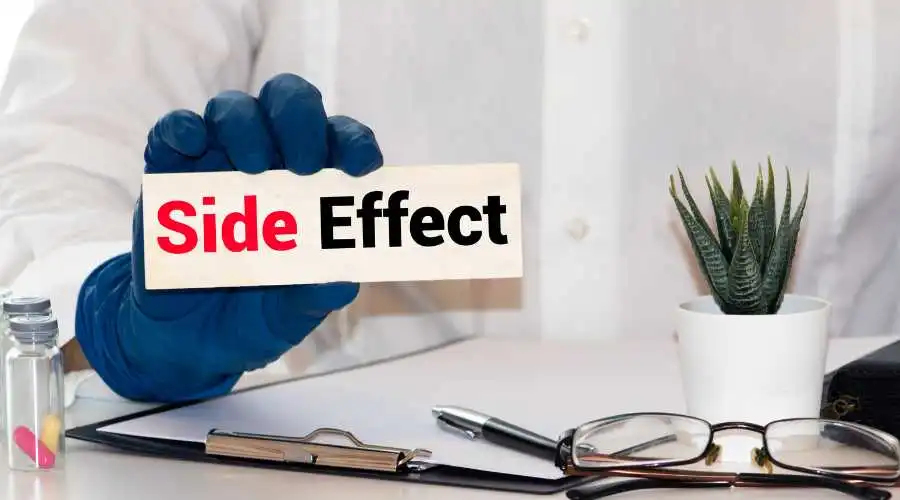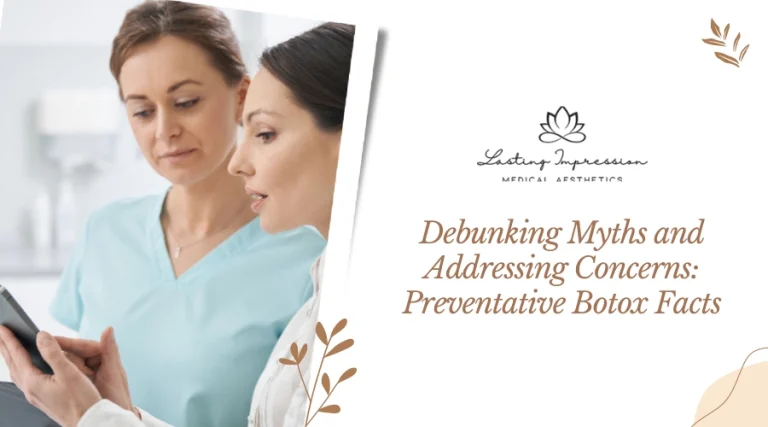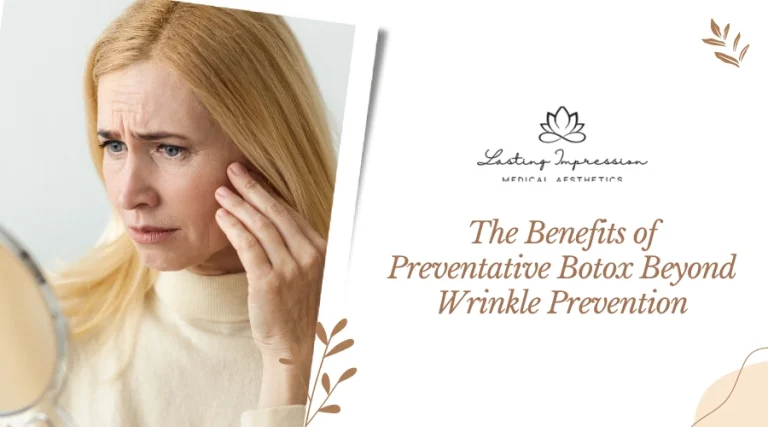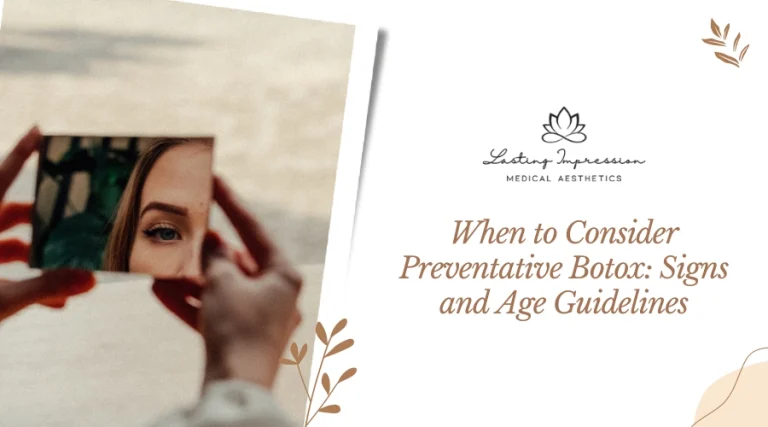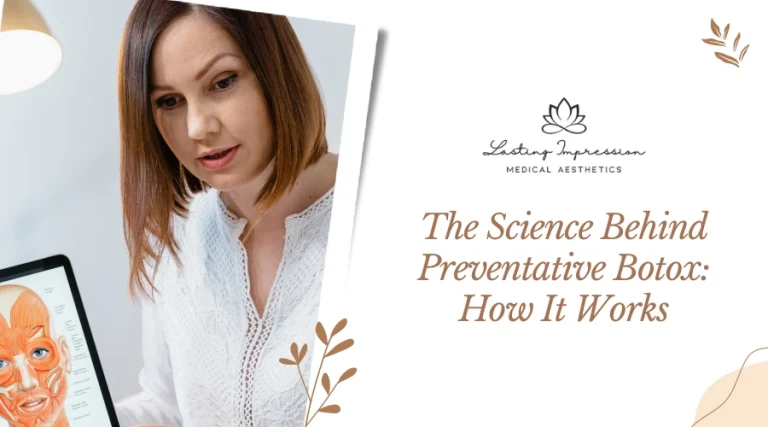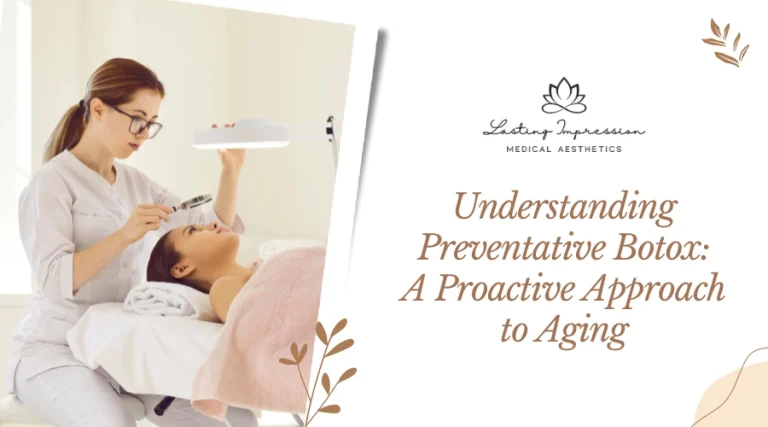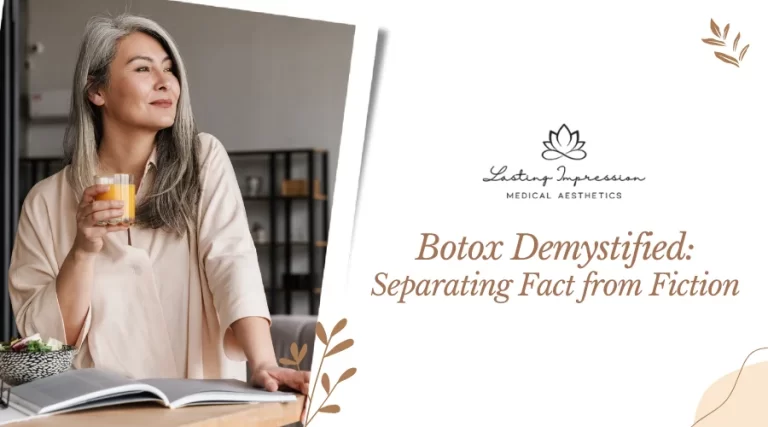Important Takeaways:
- Botox Cosmetic (onabotulinumtoxinA) is a wrinkle-smoothing injectable drug.
- The most frequent Botox adverse effects include injection site discomfort or irritation, drooping eyelids, and headaches.
- Serious negative effects are uncommon. However, when they occur, they are often associated with the medicine spreading to other body regions.
The need for less intrusive cosmetic operations has increased in recent years. As an alternative to cosmetic surgery, more individuals resort to “treatments” to improve or modify their looks.
Botulinum toxin injections for wrinkle reduction are the most common of these minimally invasive cosmetic treatments. Botox Cosmetic (onabotulinumtoxinA) was the first and most well-known brand in this family of drugs. It is available from a qualified expert during a visit to a healthcare practitioner or at a med spa.
Botox is widely used. But is it secure? Here’s all you need to know about Botox’s common and severe side effects.
What is Botox?
Botox is a botulinum toxin-based injectable medicine. This is a substance made by the bacterium Clostridium botulinum.
Botox Cosmetic is most often used as an FDA-approved wrinkle treatment. However, a medical form of Botox may be used to a range of health conditions, such as migraines, overactive bladder, and excessive sweating.
How does Botox work for wrinkles?
Botox is a neurotoxin that affects the nerves. Botox Cosmetic is injected into particular parts of your face to inhibit communication between your nerves and muscles. As a consequence, the afflicted forces are unable to contract. This helps to smooth out wrinkles and prevent new ones from developing.
9 Botox Side Effects to Know About
Botox Cosmetic is typically well tolerated, and most patients recover rapidly after each treatment. However, adverse effects remain a possibility.
The adverse effects you encounter are determined by the quantity of medicine you were given and the parts of your face where you were treated. Your provider’s approach and ability partly assess the severity of side effects.
1. Injection Site Reactions
The most frequent adverse effects of Botox Cosmetic include pain, bruising, and skin color changes near the injection site. These responses are common when an injection momentarily damages a blood artery. Injection site responses often appear quickly after therapy and should resolve independently.
A less frequent injection-related adverse effect is a local bacterial infection. Bacteria might enter your muscle when the needle breaches the skin and enters it. The easiest method to avoid this is to disinfect the injection site before each dosage. This should be done as part of the usual preparation for the person providing your Botox injections.
2. Headaches
Another typical Botox Cosmetic adverse effect is headaches. This might be because the medicine causes your muscles to spasm before they become paralyzed, but the exact explanation is unknown. The good news is that headaches are typically insignificant and disappear within a few days.
Over-the-counter drugs such as naproxen (Aleve) or ibuprofen (Advil, Motrin) may assist if your headaches are bothering you.
3. Forehead Side Effects
Botox on the forehead might have unusual side effects.
Blepharoptosis, or drooping eyelids, is a frequent adverse effect. It has been claimed that up to 20% of persons with Botox Cosmetic treatments on the forehead are affected. Brow ptosis, or drooping brow, is also conceivable. These symptoms are typically noticed in just one eye and should resolve within 3 to 6 weeks. However, it might take up to three months.
The “Mephisto sign” is another Botox Cosmetic adverse effect. It could cause the tip of your brow to be higher than the rest. This gives the user the appearance of being astonished or doubtful. The impact is transient, although it may last up to three months.
Botox treatments for the forehead may also accentuate wrinkles. This occurs when a strong boundary forms between paralyzed and non-paralyzed muscles in the forehead. Once again, this impact is just transitory.
4. Dry Skin
Some individuals may develop dry and flaky skin at the sites of Botox Cosmetic injections. Although the exact mechanism is unknown, this occurs because Botox reduces the body’s capacity to sweat. This may cause the skin to become drier, flakier, and tighter.
5. Spreading of Botox Toxin
Although uncommon, Botox Cosmetic may extend beyond the places where it is injected and create significant complications. This danger increases if Botox Cosmetic is injected into parts of your body that are not suggested or permitted by the FDA.
The toxin in Botox may spread throughout your body, causing symptoms such as muscular paralysis or breathing difficulties, depending on where it goes. These side effects may range in intensity and show from hours to weeks after the injections. Botulism, a rare but deadly health disease, is also a possibility.
6. Difficulty Swallowing or Breathing
Botox may weaken the mouth, throat, and neck muscles that govern swallowing and breathing. This might be problematic for persons who already have swallowing or breathing issues.
Although these symptoms are infrequent, they may emerge from hours to weeks after a Botox treatment session. If you have trouble swallowing or breathing following an injection, go to the nearest emergency department immediately.
7. Eye and Vision Problems
Because Botox Cosmetic may impact the muscles that regulate your eyelids so that you may blink less after your injections, this may lead to issues such as dry eyes, eye discomfort, and eye damage. Chronic dry eyes might result in a scratched cornea.
Botox Cosmetic may also alter the muscles that govern eye movements, causing issues such as double vision or difficulties gauging distance.
If you notice any of these symptoms, see an eye expert immediately to prevent them from worsening.
8. Heart Problems
Botox may seldom harm your heart. It has the potential to induce irregular heartbeats or even heart attacks. If you already have cardiac issues, this is more probable. Before having Botox, discuss any problems cardiac with your healthcare physician.
9.Nerve or muscle problems
Because Botox injections may induce muscular weakening, patients with nerve or muscle issues, such as myasthenia gravis, should exercise caution. Botox may aggravate your problem.
How to Save With Bergen County Botox
1. Compare Prices- Enter your dose and amount to see how much money you may save.
2. Select your free coupon- You may utilize the discount or check costs at nearby pharmacies.
3. Show coupon to your pharmacist- When picking up your medication, show your paper or electronic discount.
Do Botox treatments have long-term consequences?
Botox Cosmetic side effects are often transient. However, in rare situations, patients with numerous Botox Cosmetic injections over a lengthy period may experience irreversible facial alterations. Examples are changes in a person’s facial expressions or the inability to produce specific facial motions.
To avoid significant Botox hazards, go to a healthcare physician and facility trained and licensed to administer these injections. Misuse or inappropriate usage may lead to botulism, which can be fatal. Botox items that are contaminated or counterfeit might also provide unsatisfactory outcomes. You’re more likely to encounter these difficulties if you visit an unregistered or improperly educated clinic or med spa.
When should I consult with my doctor regarding Botox’s side effects?
If you have difficulty eating, talking, or breathing after receiving Botox Cosmetic injections, seek medical attention immediately. These issues may put you in danger of choking, severe breathing difficulties, or even death. They might be botulism symptoms. Therefore, it’s critical to get treatment as soon as possible.
Botox Cosmetic adverse effects usually develop during the first week after injections. They should go away with time. However, notify your healthcare practitioner if these side effects are troublesome, worsen, or do not go away.
What can I do to control the Botox side effects?
Inform your healthcare practitioner if the side effects are unpleasant or do not go away. Depending on your symptoms, they might provide management advice. These may include:
- Bruising at the injection site: Apply cold packs to your skin immediately after injections. This reduces bleeding under the skin of the brow and other areas of the face.
- Pain at injection site: Consider using an over-the-counter (OTC) topical pain reliever like lidocaine cream.
- Dry or irritated eyes: Consider using an over-the-counter lubricating eye drop or ointment in the afflicted eye. Use protective soft contact lenses or an eye patch to keep dirt and allergens out of your eyes.
- Double vision or difficulty judging distance: Covering the afflicted eye may help, but if this condition persists, see an ophthalmologist.
The Bottom Line
Botox Cosmetic is a drug that is injected. It is injected into some areas of your face, such as the brow, to reduce the appearance of wrinkles. Although most individuals handle this drug well, adverse effects are possible. The most frequent side effects include pain and bruising at the injection site, drooping eyelids and brows, and headaches.
However, more significant side effects, such as difficulties breathing and swallowing, might occur. To reduce the danger of substantial complications, you should only have Botox Cosmetic administered by a registered facility and a qualified medical physician.

